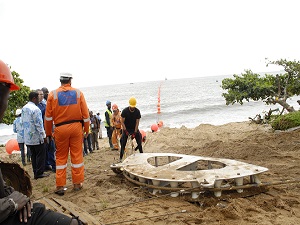Africa has fibre optic link to South America
Africa has fibre optic link to South America

The first cable system - South Atlantic Inter Link (SAIL) – directly connecting Africa to South America has been completely laid.
According to a statement issued by Huawei Marine, executor of the project, installation of almost 6,000 km submarine cable linking Kribi in Cameroon to Fortaleza in Brazil was completed recently.
"The SAIL cable system has been designed to be a fast and direct path, utilising the industry leading 100G transmission technology and to deliver a design capacity of 32 Tbps, through a 4 fibre pair configuration since its inception in 2016... With the rapid development of global infrastructure and a massive surge in worldwide internet traffic, Africa and Latin America are becoming strategic emerging markets of the global telecommunications industry," read the statement.
Huawei Marine added that the introduction of SAIL meets the traffic demands from the emerging markets, and also opens a new routing through diverse paths between Africa and North America, Europe and South America.
Counting as part of the country's National Broadband Network II Programme, feasibilities study of the SAIL project was launched in 2016, before passing into the implementation phase. Efforts to bury the optic fibre under the seabed kicked off in earnest last May.
Executed by Huawei Marine, with China Shenyang International Cooperation Company Limited as constructing enterprise, the SAIL project is a joint investment by China Unicom and Cameroon Telecommunications (Camtel).
During the implantation of the optic fibre, Camtel engineers had been testing the parameters of the optic fibre cable, paying attention to its tensile capacity and possible reactions under the ocean, said David Nkoto Emane, General Manager of Camtel.
The SAIL landing station in Kribi - Cameroon is also already playing host to Nigeria-Cameroon Submarine Cable System (NCSCS), which runs from Kribi in Cameroon to the MainOne landing station in Lagos in Nigeria. It was put in place in 2016. It will also be the landing station for a cable system under study which will link the country to Europe.
The SAIL is already generating interest, as an exploitation deal for commercial purpose worth FCFA 18 billion has already been reached between Camtel and an Equato-Guinean company.
Pierre Paul Njonga, Coordinator of the National Broadband Network II Programme, said that with the Chinese-built SAIL, navigating the internet in Cameroon will be more secure, smoother, easier and faster, bringing about economic benefits. "Today, Cameroon uses about 60 gigabits per second, making us to browse 400 times slower than when we will be at 32 terabits per second."
It is worth noting that Cameroon's optic fibre backbone is managed by Camtel, with other mobile network service providers including MTN, Orange and Nexttel making use of it.